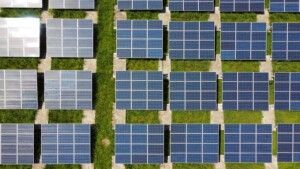What Are Elements of the Most Sustainable Business Practices?

There are two words that will influence the direction of business and industry from mid-Century onwards; those two words are “economy” and “sustainability.” Economy refers to how efficient we can make our industries, and sustainability relates to efficiency over time. In this article, we take a look at some of the indispensable business practices for today and tomorrow.
Alternative Transport
Prior to the roll-out of full digital integration for businesses, travel was still at the forefront of many industries. Sometimes it’s still necessary to fly to lo another location for a business meeting, but the need for it is dwindling quickly with the reliability of digital conference solutions.
Nowadays, there are plenty of alternatives to flying. For instance, your employees could take the train which has far lower carbon emissions or resolve not to travel at all and work out digital solutions. If flying is the only option, you need to make sure you are offsetting the carbon.
Digital Integration
Digital integration sometimes refers to the integration of digital devices and platforms, but it can also mean the integration of digital technologies into businesses instead of the carbon-heavy methods of the past. Digital integration is now happening rapidly and needs to be embraced.
Whether you need a method for interacting with colleagues or business partners on a daily basis or a system to make your business more efficient and sustainable, there are digital solutions that can help. So, don’t invest in practices that cost the earth; go digital instead!
The Six Sigma Method
When a business is more efficient, it contributes to sustainability. Less wasted resources in the commercial processes means that business efficiency is not only good for revenue streams, but it is also good for sustainability. One such method is the Six Sigma Method for efficiency.
The Six Sigma Method was introduced in the early eighties through Motorola and has since been used by other major brand names such as General Electric. Boeing, and Toshiba. The Six Sigma Method is a form of goal setting to pare down your business processes to improve them.
Off-setting Carbon
Modern digital solutions mean that carbon-heavy flights are less viable in today’s business world, but that doesn’t mean that businesses don’t need industry flights now and then. Flying is one of the largest contributors to global carbon output, adding around 25% extra to the air.
If you need to fly, then make sure you offset your carbon by planting trees or investing in carbon-neutral projects. Not only is this practice needed to help governments achieve the global climate targets, but it’s also necessary for the image of your business and personal contribution.
Energy Alternatives
The quantity of carbon in the atmosphere is the biggest concern as we move into the middle of the century; as carbon in the atmosphere grows, the temperature continues to rise via the greenhouse effect, which is harmful to life on the planet and endangers many species.
The good news is that we have alternatives to the carbon-heavy practices of the past. Instead of burning significant quantities of fossil fuels to drive industries, we can switch to sustainable alternatives such as electric power from renewable energy sources. It’s best for business.


